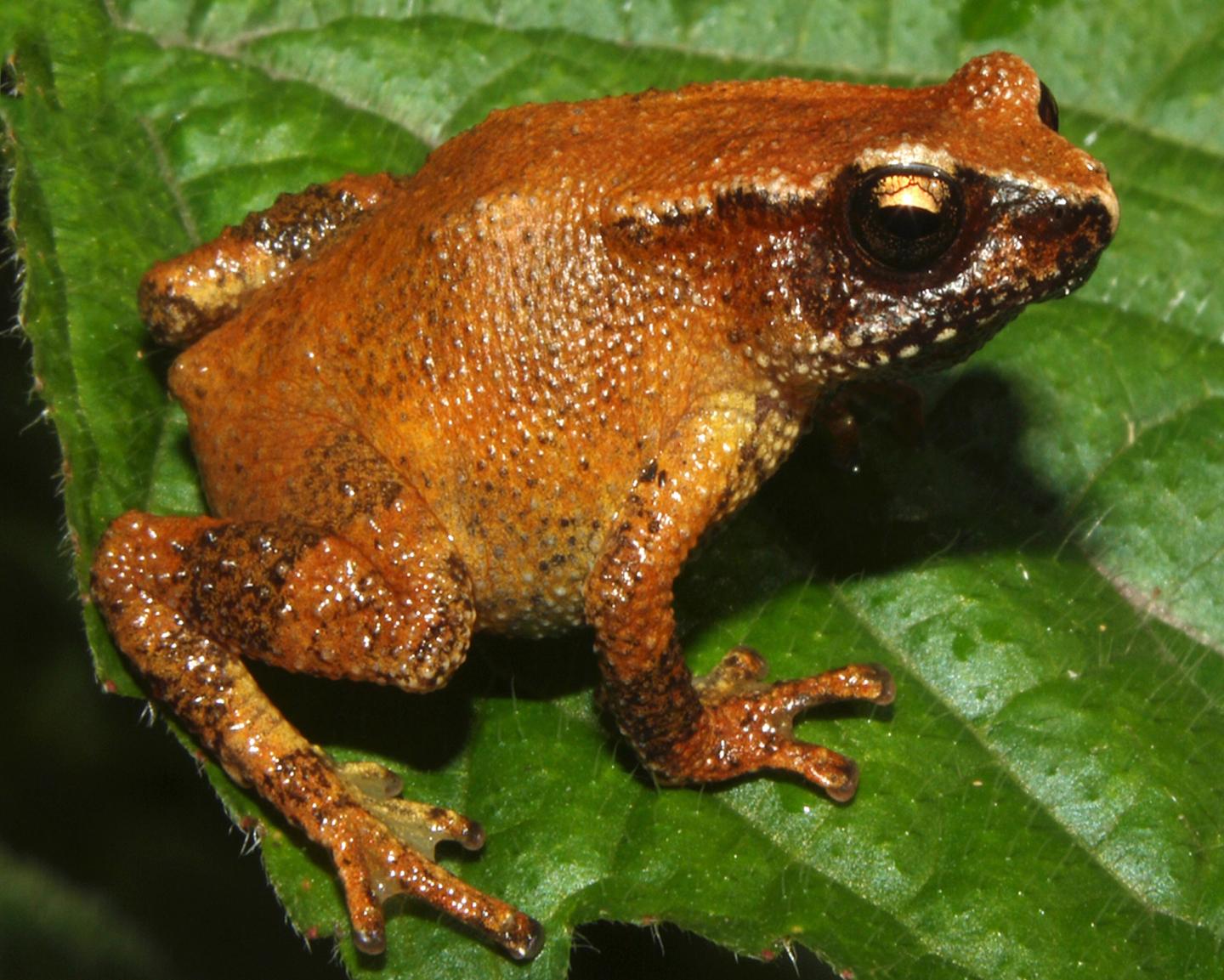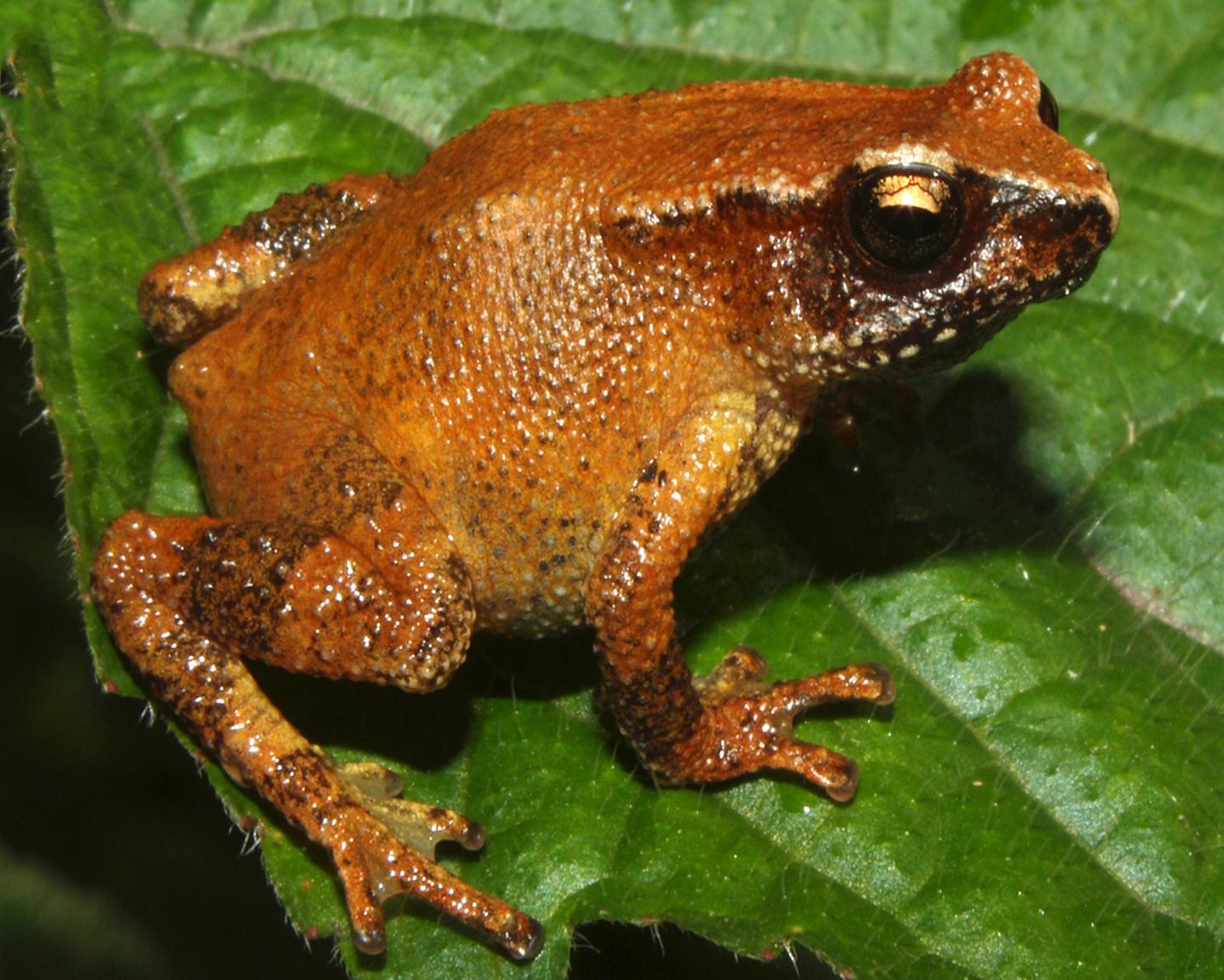
IMAGE: A Blythophryne beryet toad sitting on leaf surface.
Credit: Dr. Ramesh K. Aggarwal
Found on a herb bush, a toad of only 24 mm average length, measured from its snout tip to its cloaca, was quick to make its discoverers consider its status as a new species. After identifying its unique morphological and skeletal characters, and conducting a molecular phylogenetic analysis, not only did Dr. Aggarwal, Centre for Cellular & Molecular Biology, Dr. Vaudevan, Wildlife Institute of India and Laboratory for Conservation of Endangered Species along with their team, introduce a new species, but also added a new genus. The new 'Andaman bush toad', as its proposed common name is, is described in a paper published in the open-access journal ZooKeys.
With its significantly smaller size when compared to its relatives, the new toad species seems to have had its name predetermined by nature. After naming its genus after the initiator of herpetological studies in the Andaman and Nicobar Islands and the first Curator of the Asiatic Society of Bengal, Edward Blyth, the species name was derived from the local epithet 'beryet', referring to 'small frog' in Andamanese. As a result, the toad was named Blythophryne beryet.
"We believe that the Great Andamanese knew of the existence of this small arboreal anuran," the scientists explained their choice. "We hope the nomen we coin here will also raise awareness about the dwindling, indigenous tribal populations in the Andamans, their culture and extinction of their tribal languages."
The herein described toad species occupies mostly evergreen forests across five of the Andaman Islands in the Bay of Bengal, India. Although highly abundant, this is probably because of its narrow range of distribution.
Being active at night, the little amphibian can be regularly seen all year round, rested on the leaf surface of herb bushes. During daytime, it tends to hide under leaf litter on the forest floor. It is also characterised by reddish brown colouration, complete with two feeble dark brown inverted 'V'-shaped markings.
Because of its severely fragmented population, restricted to no more than 10 locations, its conservation status is regarded as 'Endangered' based on the IUCN. Additional threats to the so far monotypic genus and its habitat are also posed by human activity and invasive fauna.
###
Original source:
Chandramouli SR, Vasudevan K, Harikrishnan S, Dutta SK, Janani SJ, Sharma R, Das I, Aggarwal RK (2016) A new genus and species of arboreal toad with phytotelmonous larvae, from the Andaman Islands, India (Lissamphibia, Anura, Bufonidae). ZooKeys 555: 57-90. doi: 10.3897/zookeys.555.6522
Media Contact
Dr. Ramesh K. Aggarwal
[email protected]
@Pensoft
http://www.pensoft.net





